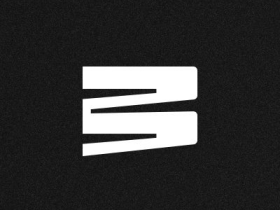With a current value of $2,763.30, Ethereum is the second-largest cryptocurrency, according to MarketCap. An Application Specific Circuit (ASIC) miner for Ethereum mining has been released, according to a recent announcement from Bitmain, a company that makes ASIC chips for cryptocurrency mining. thereby signaling to its developers that the mining industry for Ethereum would be expanding to Proof-of-Work alone.
With a trade volume of $29,107,123,138, about 115,708,027 Ethereum have been mined up to this point. You’ve come to the correct place if Ethereum and Ethereum mining pique your curiosity. You will examine the numerous ideas and elements related to Ethereum mining in this course.
Overview of Ethereum
Ethereum is a computing platform built on blockchain technology that lets its developers create and run decentralized applications. Ethereum’s money, ether, is used to create decentralized apps, smart contracts, and typical peer-to-peer transactions.
The Ethereum Network is powered by ether. It monitors and streamlines every network transaction.
Ethereum Features
Now let’s examine the characteristics of Ethereum that set it apart from other cryptocurrencies.
- Ethereum makes sure that every transaction on the Ethereum blockchain is more secure in terms of cryptography.
- Every transaction made over the Ethereum blockchain is unchangeable. In other words, data cannot be changed after it has been written and stored. This increases the difficulty of manipulation or hacking.
- Ethereum has a significant advantage over other protocols since it has the largest developer community in the world.
- The Ethereum-based apps can be instantaneously connected to hundreds of other protocols, or “money legos,” including marketing and finance.
What is Ethereum Mining?
To put it simply, the act of generating and appending a new block of transactions to the Ethereum blockchain network is known as Ethereum mining. It now employs the consensus method known as Proof-of-Work. Every transaction that occurs within the Ethereum network requires miners’ approval.
Miners on the Ethereum Blockchain Network employ a Hashing Scrypt (Ethash) to solve computationally challenging problems to successfully mine the transaction blocks. This procedure aids in protecting the network from intrusions such as identity theft or hacking.
Why Should You Mine Bitcoin?
- To generate revenue is the main objective of Ethereum mining.
- It makes network security a profitable, albeit rather complicated, endeavor.
- After mining every block on the Ethereum Blockchain Network, miners are rewarded with a fixed amount that includes the transaction fees that users have paid.
Ethereum Mining Types
There are three methods for mining Ethereum:
- Pool Mining
- Solo Mining
- Cloud Mining
Pool Mining
The quickest and most straightforward method of beginning Ethereum mining is pool mining. You cooperate in a single pool with other people. Additionally, everyone in the Pool will split the bounty if someone correctly deciphers the hashcode.
Before entering a pool, you should take into account the following important factors:
- Size of pool
- Minimum Payout
- Pool Charge
- The number of blocks and share awards in the Ethereum network are determined by the size of the pool. The likelihood of receiving rewards rises with the number of miners.
- However, your portion of the prize decreases with the number of participants.
- The minimal quantity of Ethereum you must mine for it to be credited to your wallet is known as the minimum payout.
- Large Minimum Payout pools are unfavorable since you will have to stay in the pool longer to receive your payout.
- As a result, pools with low Minimum Payout amounts are thought to be safer. Without devoting too much of your time to a single Pool, you will be compensated regularly.
- There is a pool fee that goes along with each pool. It is the sum of money you must pay to keep utilizing the pool. Depending on how much Ethereum you are mining, this amount is based on a percentage. It generally fluctuates between 1% and 3%.
Note: Pool mining would be more beneficial since you won’t have to wait days or weeks for no reward, even if your payout is lower.
Solo Mining
You can only get paid for Ethereum Solo Mining if you figure out the puzzle and mine the Ethereum block first. Note: You have to be extremely skilled at what you do because there are a lot of people and companies in this market. Solo mining is only profitable if you have a lot of resources on hand, such as a graphics card with a score of 100 or higher.
However, it comes with drawbacks such as:
- Electricity costs: Having a lot of equipment and other electrical appliances, such as lights and fans, may result in excessive electricity use and bills.
- Space: Since not everyone has a sizable enough room to put up all the tools and resources required for Ethereum mining, space is a serious issue.
Cloud Mining
You pay someone else to mine Ethereum for you when you use Ethereum Cloud Mining. They give you the earnings from mining Ethereum in exchange for you paying them a certain amount of money in fees for their time and effort.
However, there are advantages and disadvantages to this method of mining Ethereum.
Advantages of Cloud Mining
- Should any equipment be damaged, you are not liable.
- It’s not required that you buy every piece of gear and find a large enough storage area for it. You can relax, watch the market, and take pleasure in the profits from your Ethereum mining investment.
Cons of Cloud Mining
- You won’t be able to get your money back if the price of ether declines. You lose the money you invested and any fees you paid the miner.
- You are not allowed to request that the other person adjust their equipment to address your concerns.
- For mining service providers, Ethereum Cloud Mining is thought to be a safer approach to ensure that the resources they have invested in will yield a profit.
What Is the Process of Mining?
Ethereum mining operates according to a predetermined set of procedures.
- Using his digital wallet account’s private key, a user requests a transaction.
- Subsequently, the request is distributed globally via the Ethereum network.
- After that, a list of pending transactions that must be added to the Ethereum blockchain network is updated with the requested transaction.
- After that, the miner checks and validates the requested transaction and uses the transaction data to solve a challenging mathematical puzzle.
- After the requested transaction is approved and a copy is kept in EVM, the “Proof-of-Work” procedure starts for that block.
- The Ethereum Network’s nodes then confirm that, following the completion of all transactions, the checksums of the miner’s block and their updated state of the EVM match.
- The block is added to the Ethereum Blockchain Network only after that.
- The miner receives payment in the form of Ether in their wallet after successfully mining the block.
- Following approval, the proposed transaction is credited to the appropriate wallet or wallets.
- Although each transaction is only mined once, it is verified by every Ethereum Network user.
How Can I Mine Ethereum?
The following are the tools you’ll need to mine Ethereum on your PC effectively:
- An Ethereum wallet to keep all of the money you’ve earned.
- A graphics card or GPU drivers with at least 3GB of RAM.
- A mining program that works with your hardware, such as the GPU.
- Need a compatible OS (Windows 7 or 10, 64 bit).
Is Ethereum Mining Lucrative?
- The cost of electricity in that specific location has a big impact on every cryptocurrency miner’s profit margin.
- Anything that costs less than $0.12 per kilowatt-hour is generally seen as lucrative.
- By examining these numbers, which include the hashrate of Ethereum, the block reward, the number of blocks per day, and the price of Ethereum coins, you can mine Ether and make it profitable.
- You may calculate your daily revenue based on these criteria by using an Ethereum calculator.
You may also use this formula.
Daily Revenue is calculated as follows: (total hashrate / hashrate * block reward * blocks in a day * coin price)
It is predicted that in the upcoming years, the price of ETH will increase and stabilize. Thus, this is a great time to save and invest in Ethereum.
In summary
You learned about Ethereum mining in this lesson, including its principles, several kinds of Ethereum mining, how to mine Ethereum, what you need to mine Ethereum, and if mining Ethereum is lucrative.
Do you want to ask us any questions? Kindly feel free to leave them in this article’s comments section, and one of our specialists will respond as soon as they can.













Leave a Reply